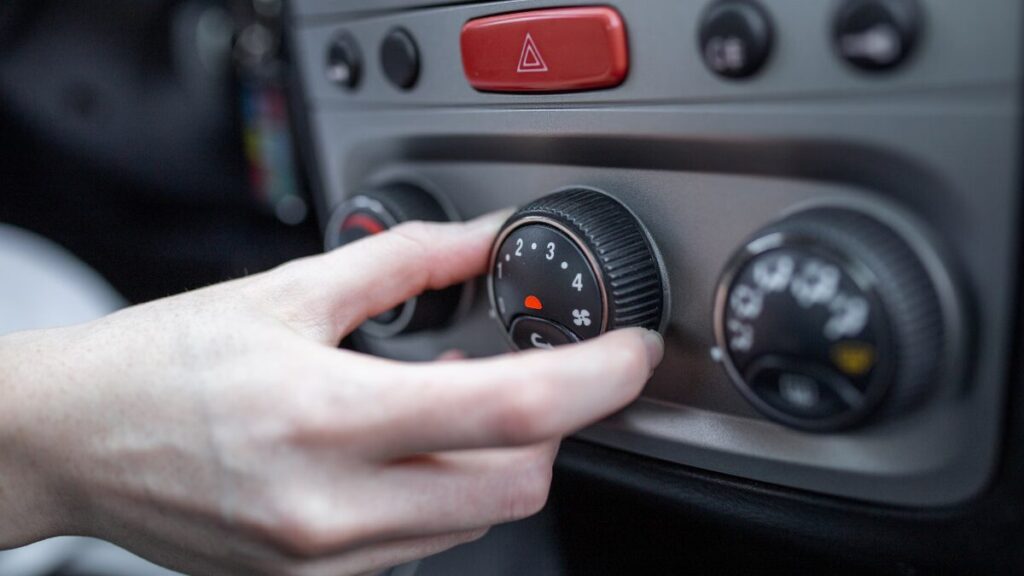
A well-functioning car air conditioning (AC) system is essential for comfortable driving, especially during hot weather. Regular maintenance of automotive air conditioning ensures optimal cooling efficiency, prevents costly repairs, and extends the lifespan of your AC unit.
This guide covers essential maintenance tips, including refrigerant checks, filter replacements, and cleaning condenser coils to keep your car’s air conditioning system in top condition.
1. Regularly Check and Recharge the Refrigerant
Refrigerant is the lifeblood of your car’s air conditioning system. It absorbs and releases heat, allowing the system to cool the air efficiently. Over time, refrigerant levels may deplete due to leaks or natural evaporation, reducing the AC’s performance.
Steps to Check and Recharge Refrigerant:
- Check AC Performance: If your AC is blowing warm air or cooling inefficiently, low refrigerant levels may be the culprit.
- Inspect for Leaks: Look for visible signs of leaks, such as oil stains or frost on AC components.
- Use a Refrigerant Gauge: You can use a pressure gauge to check refrigerant levels. If levels are low, a recharge may be necessary.
- Recharge if Necessary: Use a manufacturer-recommended refrigerant and follow proper guidelines to refill it. If you’re unsure, seek professional assistance to avoid overcharging the system.
2. Replace the Cabin Air Filter Regularly
The cabin air filter traps dust, debris, and pollutants, ensuring clean airflow inside your car. A clogged filter can restrict airflow, reduce cooling efficiency, and cause unpleasant odors.
When and How to Replace the Cabin Air Filter:
- Check the Manufacturer’s Recommendations: Most filters need replacement every 12,000 to 15,000 miles, but this varies depending on driving conditions.
- Inspect for Dirt and Debris: If the filter appears dirty or clogged, it’s time for a replacement.
- DIY Replacement: The filter is usually located behind the glove compartment or under the dashboard. Remove the old filter and insert a new one, ensuring it is properly seated.
- Choose the Right Filter: Opt for high-quality filters that can trap allergens and pollutants effectively.
3. Clean the AC Condenser Coils
The AC condenser, usually located at the front of the car near the radiator, dissipates heat from the refrigerant. Dirt, leaves, and debris can accumulate on the coils, reducing heat exchange efficiency and causing the AC to work harder.
Steps to Clean the AC Condenser:
- Locate the Condenser: Find it behind the front grille of your car.
- Remove Debris: Use a soft brush or compressed air to remove dirt and debris.
- Wash with Water: Spray the condenser with water to clear stubborn dirt, but avoid using high-pressure water that could damage the fins.
- Check for Damage: Bent or damaged fins can restrict airflow. Use a fin comb to straighten them if necessary.
4. Inspect and Maintain AC Belts and Hoses
Belts and hoses play a crucial role in your car’s air conditioning system. Worn-out belts can cause inefficient compressor operation, while leaks in hoses can lead to refrigerant loss.
How to Inspect and Maintain Belts and Hoses:
- Check for Wear and Tear: Look for cracks, fraying, or excessive slack in belts.
- Listen for Unusual Noises: Squealing or rattling sounds when the AC is running may indicate belt issues.
- Inspect Hoses for Leaks: If you notice oily residue around hose connections, it may indicate a refrigerant leak.
- Replace Damaged Components: If belts or hoses show signs of wear, have them replaced to prevent system failure.
5. Run the AC System Regularly
Even during colder months, it’s essential to run your car’s AC system periodically. This helps keep the compressor lubricated and prevents seals from drying out.
Benefits of Running the AC Regularly:
- Prevents Mold and Bacteria Growth: Running the AC helps reduce moisture buildup, which can lead to mold and unpleasant odors.
- Maintains Compressor Health: Keeping the system active ensures that vital components remain in good working order.
- Detects Potential Issues Early: Running the AC allows you to notice any performance issues before they become major problems.
6. Seek Professional AC Servicing
While basic maintenance can be done at home, professional servicing is necessary for a thorough system check. Experts can diagnose complex issues, repair leaks, and ensure your AC runs at peak efficiency.
When to Get Professional Servicing:
- AC Blows Warm Air: If recharging refrigerant doesn’t solve the problem, there could be a deeper issue.
- Strange Noises or Odors: Unusual smells or sounds may indicate mold buildup or mechanical issues.
- Poor Airflow: If the AC is running but airflow is weak, the blower motor or evaporator may need servicing.
Conclusion
Maintaining your car’s air conditioning system is crucial for comfort, efficiency, and longevity. Regular refrigerant checks, timely filter replacements, condenser cleaning, and proper belt and hose maintenance can keep your AC performing at its best. By following these essential tips, you can ensure a consistently cool and comfortable ride, no matter the weather. If you notice persistent AC problems, don’t hesitate to seek professional assistance to prevent further damage and costly repairs.
